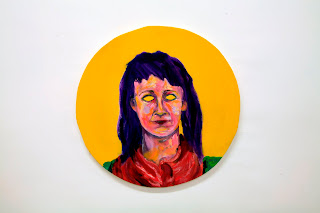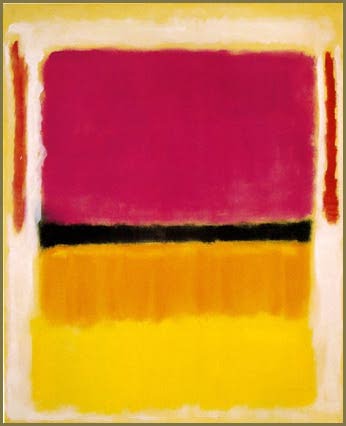
The destinction between painting and scultpture is the dimensions in which each exsist. Painting is a 2-dimensional image. 3-dimensions are created in painting by tone, depth and colour relationships. When you apply paint to a surface you have to go under the surface to create the 3-dimensional illusion. With sculpture it is seen in 3-dimension. However, when sculpture is viewed as a photograph then the work itself becomes 2-dimensional. With painting you can use various tricks to show form and the viewer might not pick up that the anatomy isn't accurate. One tool is the use of colors to distract the eye. Whereas with sculpture, the only color is the shadows created by the material itself. It can be viewed from all angles to see if it truly is accurate.

Painting is in 2D and sculpture 3D. Painting is one degree, one angle. Sculpture is 360 different "paintings" all in one piece of art. 360 degrees.

The idea behind creating a painting/scultpture is to explore the uses of colour and shape in both media. Sculpture and structural crafts have provided painting with its very foundations. Despite their differences, both Michelangelo and Leonardo both were of the Florentine tradition of painting which would eventually be eclipsed by the Venetian way of handling paint. Both were contour oriented in the crafting of their paintings. This "structural" approach to painting has much in common with sculptural ideas. By combining what is found in the colour and structural experiments the end result will evolve into a multi-faceted piece of work that denotes several meanings.

The concept for the cube came about when I decided that i would not hang my paintings on the wall, like tradition suggests I do. I played about with placing them on the floor and hanging them from string. These experiments turned out to creat a murky cloud over the idea. I chose the Cube as it would enevitably lead me into a realm of shapes and forms that could be manipulated and arragned according to the concept.

The Cube will have structural identity. The interior will be constructed by Triangles. The exterior will be made up by the painted cirlces. These three shapes are the basis of architectural study and design work. This fitted well with the experiments in colour I started doing with the portraits. By allowing the shapes to act as their natural form the expanse of other forms being made is vast.

















































